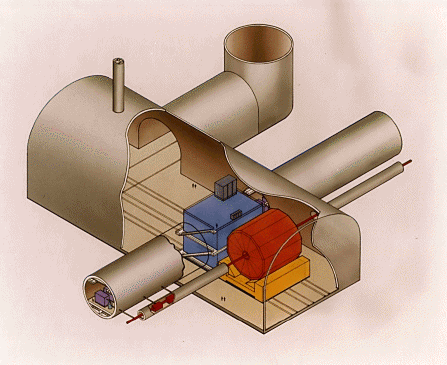Detector System

Characteristics of Electron-Positron Reactions in TeV Region
The reactions are essentially governed by the electroweak
interaction, which is one of our primary targets of experiments in
the TeV region. There are thus no background reactions.
Almost all the fundamental particles are produced in pair
via electron-positron annihilations and their properties
can be studied in precision.
Weak bosons (W/Z particles) can copiously be produced in
various reactions and new particles, if any, are expected to be
likely to decay into heavy quarks or the W/Z bosons.
The top quark also decays into a bottom quark and a W boson.
The important messages from the elementary processes in this
energy region are carried by groups of hadrons (called jets),
high energy leptons and photons, and heavy-flavored quarks.
Further Development of Detector Technology Established at TRISTAN
For TRISTAN experiments, we have been developing detector technology
to simultaneously record and analyze
events consisting of a lot of and various kinds of
particles.
The standard form of detector systems
includes a large superconducting solenoidal magnet and
various component detectors surrounding the interaction point.
Although the number of particles in a single event becomes much larger
at JLC than at TRISTAN, they can be classified into a set of
well-collimated jets.
The JLC detector should be able to trace back
each parent particle from
its daughter jets in a cascade decay and thus should allow us
to reconstruct the whole event.
Key technology lies in
calorimeters to measure the direction and energy of jets,
a vertex detector to identify heavy-flavored quarks (b-quark in particular),
and the momentum measurement and identification of high-energy leptons.
These are all challenging but possible as a straightforward
extension of the detector technology developed during the
TRISTAN experiments.
To table of contents
To previous page,
webmaster@www-jlc.kek.jp Feb 09, 1995
